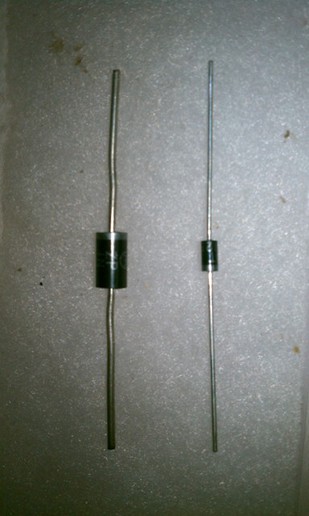AL Farmall Boy
Member
Hey guys, I recently went to a local electrical supply warehouse and purchase some diodes for the 12 volt alternator wiring on my Farmall tractors. If I understand correctly, the diode should be 200 milliamps (or 20 amps). Below is a picture of a diode I purchased at Radio Shack several months ago that is 200 mA. Next to it is a diode I purchased at the supply warehouse that is rated at (I believe) 230 mA. They are much different in size and was wondering if they may have sold me the wrong thing, or if this is correct. The reason for the purchase at the supply warehouse is because I can get them for $0.32 each, compared to Radio Shack where they are around $3.00 each.


